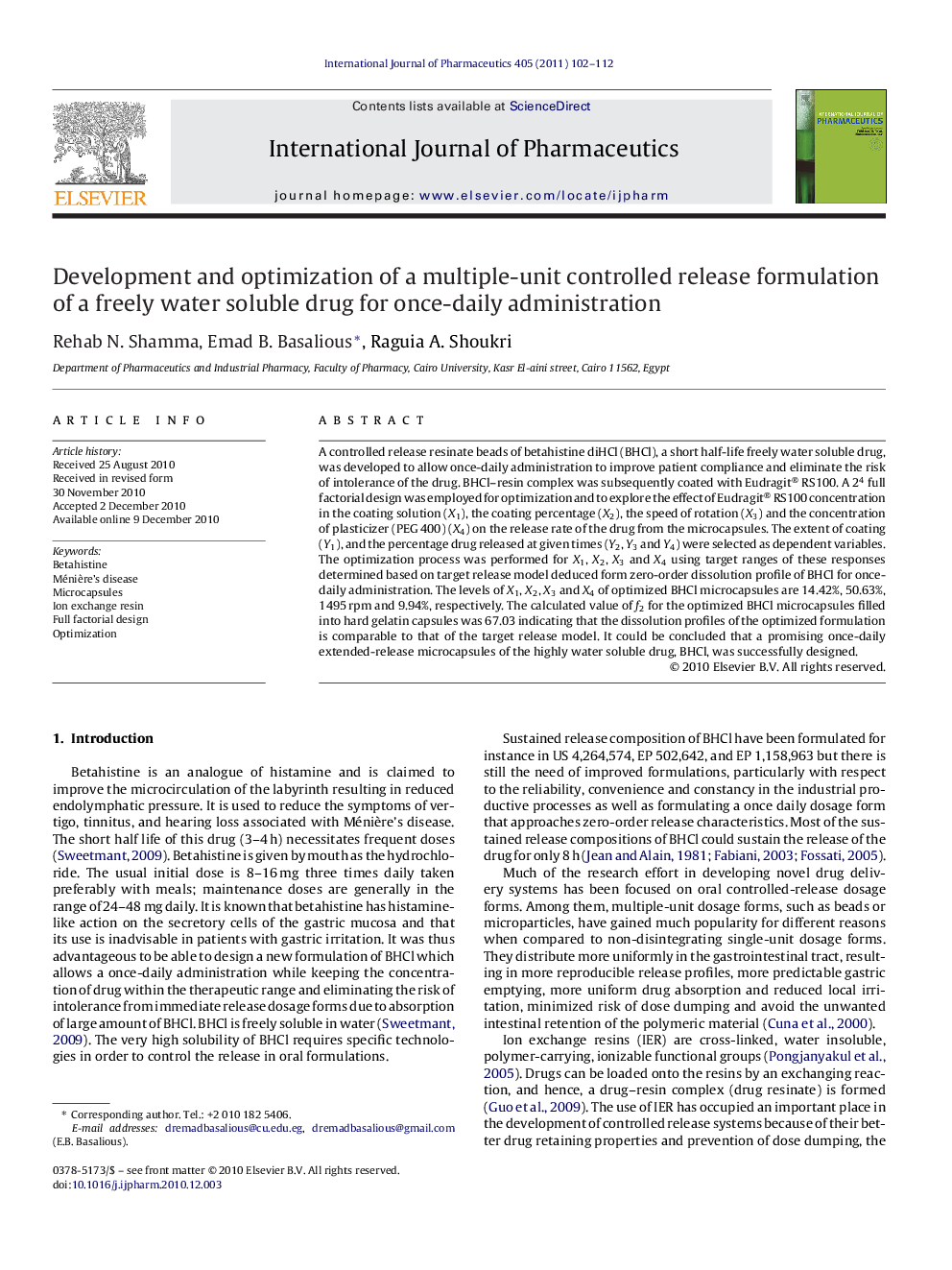| Article ID | Journal | Published Year | Pages | File Type |
|---|---|---|---|---|
| 2503643 | International Journal of Pharmaceutics | 2011 | 11 Pages |
A controlled release resinate beads of betahistine diHCl (BHCl), a short half-life freely water soluble drug, was developed to allow once-daily administration to improve patient compliance and eliminate the risk of intolerance of the drug. BHCl–resin complex was subsequently coated with Eudragit® RS100. A 24 full factorial design was employed for optimization and to explore the effect of Eudragit® RS100 concentration in the coating solution (X1), the coating percentage (X2), the speed of rotation (X3) and the concentration of plasticizer (PEG 400) (X4) on the release rate of the drug from the microcapsules. The extent of coating (Y1), and the percentage drug released at given times (Y2, Y3 and Y4) were selected as dependent variables. The optimization process was performed for X1, X2, X3 and X4 using target ranges of these responses determined based on target release model deduced form zero-order dissolution profile of BHCl for once-daily administration. The levels of X1, X2, X3 and X4 of optimized BHCl microcapsules are 14.42%, 50.63%, 1495 rpm and 9.94%, respectively. The calculated value of f2 for the optimized BHCl microcapsules filled into hard gelatin capsules was 67.03 indicating that the dissolution profiles of the optimized formulation is comparable to that of the target release model. It could be concluded that a promising once-daily extended-release microcapsules of the highly water soluble drug, BHCl, was successfully designed.
Graphical abstractFigure optionsDownload full-size imageDownload as PowerPoint slide
